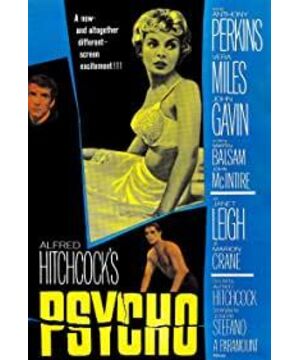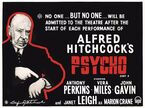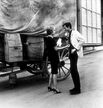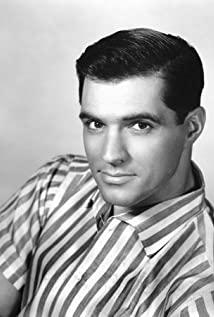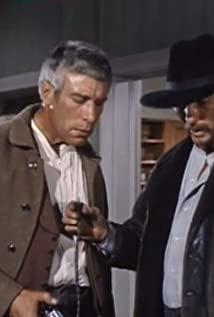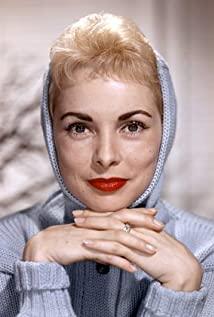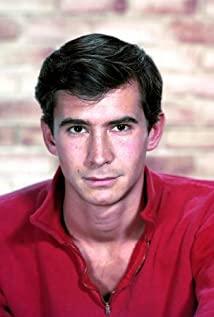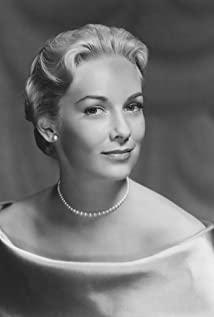In the first third of the movie, the audience is speculating that the heroine will eventually become a mental patient, just like the title of this movie. Psychological tension may drive her crazy.
However, when the plot developed until the heroine entered the hotel, the suspense of the movie changed. A slightly nervous man peeping at a woman became another driving force for the plot development. It is worth noting that the mother in the house, a rude woman who scolds her son loudly, has intervened in the main plot of the film's development with a clear image. Although at this moment the audience does not doubt the authenticity of the mother's existence.
The relationship between men and women, the attribution of $40,000 here becomes the most important factor in the plot.
However, the director's sharp turn, the bathroom murder completely subverted the entire movie.
First of all, the main suspense of the movie has undergone a fundamental change. The heroine dies, and the main thread that she becomes a mental patient is disconnected. However, as an important part of this clue, the attribution of forty thousand dollars still affects the nerves of the audience.
Next, who killed the woman became a question in the audience's mind. On the surface, the mother killed the woman, but the figure behind the shower curtain is obviously a tall man. Of course, the director then spent a considerable period of time filming how men destroy their bodies, which caused the audience's suspicious fighters to be drawn by the tense plot. But who is the murderer? This problem has surfaced.
By the way, when this part of the plot surfaced, the sinking of $40,000 to the bottom also represented the end of the first part of the plot. Hitchcock's method of rationally spreading out and not solving the contradiction at once is worthy of our reference.
Of course, under the big suspense, Hitchcock also used a lot of small suspense. For example, picking up a corpse is a sudden light. For example, it took the car three times to sink, etc. These seemingly inadvertent plots, in fact, all invisibly strengthen the effect of the movie.
After the killing was completed, the director changed a scene to tell the story, and another clue to the movie began. I really like Hitchcock's layout. He does not regard the protagonist as the main line of the development of the film, but constantly uses the onlooker's insight to narrate the story. The narrative is thus limited to one perspective, which further increases the mystery of the film.
From this time on, the host of the hotel as the protagonist of the movie has been undoubtedly confirmed. However, if you think that Hitchcock is here to stop here, you might underestimate him. An experienced, confident and sophisticated detective appeared, and he contrasted the timidity of the hotel owner. So the audience assumes that the detective will finally investigate the truth of the matter.
However, the detective died so easily, but it would be too simple to think of him as a simple transition that connects the first and second episodes of the movie. The wonderful thing about this movie is that there is no plot for the plot. Every step adds to the suspense of the movie, perfect and beautiful. First-class works of art seem to have such characteristics, just like Henry James' novel "Aspen Manuscript", every dialogue is ambiguous, until the last suspense suddenly erupts.
The usefulness of the detective's fragment is that it brings out the second important suspense of the movie. Does the mother exist? If the son's repeated obstacles to the mother can still be seen as a cover for the mother as a murderer, then the one-man show with only one son is already doubtful. This is the real fatal part of this movie, a character who never shows up. Its existence itself is the biggest suspense.
All movies that win with suspense are in the moderation of its narrative. Not to mention some facts, this seems to be the best definition of suspense.
A gorgeous and old house itself represents terror, and the mother's appearance again deepens the audience's suspicion. His size and ability to win with one blow are all doubtful. The audience was swayed. At this moment, the audience seems to have inclined that the mother itself does not exist. At this time, the movie seems to be in a rocking predicament. The suspense is diminishing, and how to tell it becomes another problem.
At this moment, Hitchcock made a fortune again, pulling the scene of the story back to his sister and boyfriend.
This is, the only evidence supporting the existence of the mother is the clothes and back of the murderer, as emphasized in the detective's phone call. And the back figure itself has two sides, and it is more like the back figure of a man.
So Hitchcock joined an episode, and the boyfriend went to find it alone. This is actually an unnecessary plot, and it seems more logical for two people to act at the same time. However, men looking for them without seeing anyone are unconvincing in themselves. This seems to be a flaw, but it is an important and indispensable part of the story.
The boyfriend saw the shadow of the old lady, which did not cause a strong reaction in the hearts of the audience at the time. However, on the way to the movie, the audience will remember and think. Especially in such an ambiguous film, in the back, my sister's sentence: You also believe that you read it right, did you? It is enough to add an important weight to the balance of the mother's existence.
At this moment, Hitchcock may have used the most cunning and ingenious trick to turn the audience around, and deliberately explaining the truth is suspicious. During the sister's visit, the sheriff told the audience with certainty that his mother was already dead. The sudden appearance of this fact made the audience suspicious. Really? This is the audience's first reaction to the news. Because the audience has become too fond of questioning in this film and in Hitchcock's films, the emergence of a clear fact is counterproductive. Then, even more subtle, the detective lady-an indispensable character-also fell into doubt, and made a call. The simplicity of the phone call once again increased the suspense implicitly.
At this moment, whether the mother exists, the shadow that the man sees through the phone call from the detective to the sister, and the visit by the sister has become the final suspense of the movie.
At this moment, the movie has half an hour to end.
Not short and not long, it shows Hitchcock's perfect control of time.
At this time, all the plots no longer distinguish whether the mother exists or not, and the narrative itself has become suspense. The mother was hugged downstairs, and the audience had no choice but to accept the conversation between the mother and the child, and no longer distinguished.
In the end, the most tense moment of the movie came, and my sister began to look for her mother's whereabouts. This is also the most successful segment of this film. In fact, this should be a vulgar plot, often seen in various TV series treasure hunts. However, in this film, it presents a moving effect.
For one thing, this is caused by the suspense of the movie itself—whether or not the mother exists. Then again, it is because of Hitchcock's unique shooting method that he showed great patience. This kind of grasp of the rhythm of the film is amazing. Instead, he put the focus on the furnishings of his mother's room, the gorgeous decoration style, his sister even opened the closet to take a closer look at the exquisite costumes. The comparison between the son and the mother’s room, toys, and a symphony of heroes. All these show unusual connotations, and my sister reads classical works. These mastery of details put the audience in a fear of being exposed, not just busy searching aimlessly, but forced to compare, distinguish and think. It seems that five minutes before handing in the exam paper, I still start to do the last math problem. Thinking in a state of urgency and anxiety makes the audience the most anxious.
Then, the man chased his sister, and the sister fled. This is a fast pace. My sister slowly walked down the stairs, walked through the hall, and finally walked into the cellar, slowly turning her mother's body. This is a slow pace again. The skull face suddenly appeared, the transvestite son broke in, and his boyfriend solved him. In addition, the lights are extremely shaking, the son's distorted expression and other details. After slowing down, the contradiction was suddenly resolved, and the moment the suspense was uncovered, it was truly open. The artistic effect reaches its culmination.
This film fully demonstrated Hitchcock's ability to tell stories. But there are still many shortcomings. It can be seen that Hitchcock's exploration of film skills and the pursuit of spiritual value. However, I have to say that these exploratory searches failed. Many people like to endorse movies from the perspective of the director. But if the audience cannot accept it, this technique will fail. The final psychoanalysis of this film is necessary, and the story must be told clearly. But it has become a dog's tail. Of course, many people find this segment fascinating. This is also because the first half of the story is too suspenseful, making the audience patiently finish it.
However, if Hitchcock could not use this dramatic monologue to speak, but to express it naturally through a performance, I would be more admired.
View more about Psycho reviews


